- info@jodhani.in
Manufacturing
You are here: Home \ Manufacturing
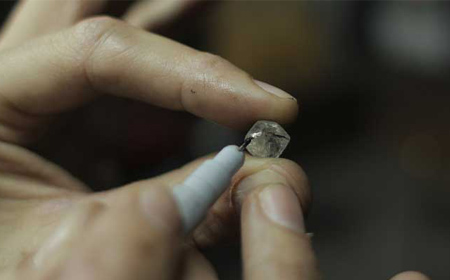
Marking is done after examining each rough diamond to decide how it should be cut to yield the greatest value. To make this decision, the shape of the rough diamond and the number and location of imperfections must be considered. Of utmost importance is the determination of the direction of the cleavage, or grain, in the diamond crystal (because of its atomic structure, diamond can be cleaved in four directions parallel to the octahedron crystal faces). Taking these factors into account, the planner decides how the diamond should be cut and marks it to indicate where the stone should be cleaved or sawed.
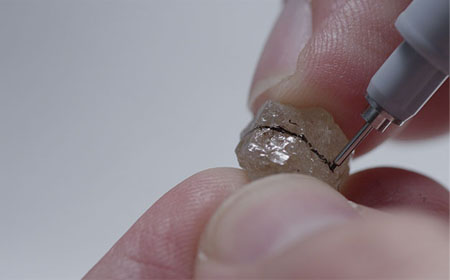
If the planner's decision is to cleave the stone, it then goes to the cleaver. Large diamonds are often preshaped by cleaving into pieces suitable for sawing. When the stone is very large and valuable, the cleaving is a most critical process, because a mistake by the planner or the cleaver can shatter the stone. The cleaver cuts a groove along the line showing where the stone is to be cleaved, using another diamond as a cutting tool. He mounts the diamond in a holder called a dop and inserts a steel wedgeinto the groove. He strikes the wedge sharply with a mallet and the diamond splits along its cleavage.
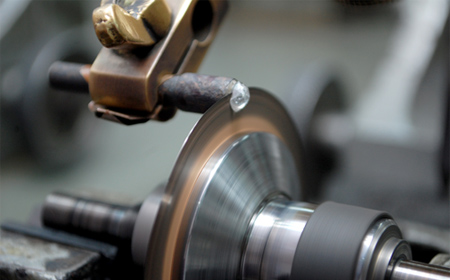
The third step, or the second step if cleaving is unnecessary, in the diamond-cutting process is sawing. The saw is a paper-thin disk of phosphor bronze, rotated on a horizontal spindle at about 4,000 revolutions per minute. The sawyer mounts the diamond in a dop and clamps it so that it rests on top of the blade. The rim of the saw is charged with diamond dust, and, as the sawing progresses, the blade continues to recharge itself with diamond from the crystal being cut. The saw will cut through a 1-carat rough diamond in four to eight hours, unless it strikes a knot, in which case it may take much longer.
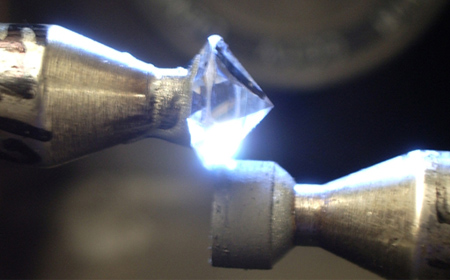
The next step in cutting a round stone is called girdling (rounding; bruting). The diamond to be girdled is placed in the chuck of a lathe; while it spins, a second diamond mounted in a dop on the end of a long handle is held against it, and the diamond is slowly rounded into a cone shape.
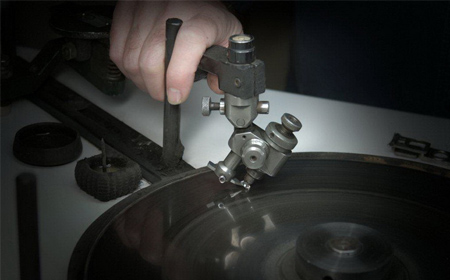
From the girdler the diamond goes to the lapper, or blocker, who specializes in placing the first 18 main facets on a brilliant-cut diamond. It then goes to the brillianteer, the worker who places and polishes the remaining 40 facets, if the stone is being cut in the standard 58-facet brilliant cut.
Placing and polishing are done by setting the stone either in a lead dop or a mechanical clamp and holding it down on a revolving cast-iron lap (horizontal, circular disk) that has been charged with diamond dust. Great skill is necessary at every stage, but especially during faceting, because the angles of the facets must be exact in order to yield maximum brilliancy, and their sizes must be accurately regulated to preserve symmetry.
The most popular style of cut is the brilliant cut, a round stone with 58 facets. A single cut is a simple form of cutting a round diamond with only 18 facets. Any style of diamond cutting other than the round brilliant or single cuts is called a fancy cut, or fancy shape; important fancy cuts include the marquise, emerald, oval, baguette, heart shape, pear shape, kite, triangle, and trilliant. The term melee is used to describe smaller brilliant-cut diamonds as well as all small diamonds that are used in embellishing mountings for larger gems.